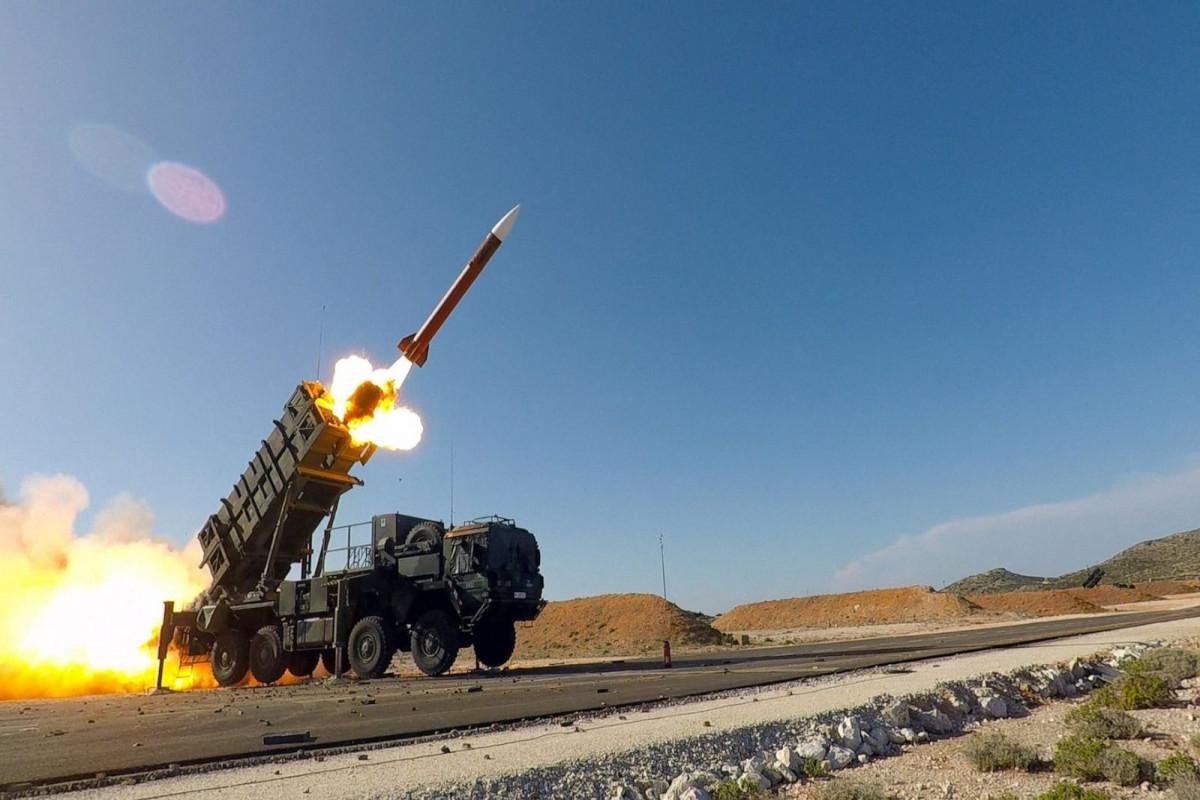US arms sales to allies: a lucrative business or a political tool?
Unexpectedly, Poland is about to emerge as Europe’s new military superpower. But Poland is not the only country to do so. The world is gripped by an arms race. Türkiye, South Korea, and a number of other countries are working to develop their own military-industrial complex. The US policy is the reason.
The Polish military buys 250 Abrams tanks and 32 F-35 stealth aircraft from the United States. And they are talking about the latest M1A2 SEPv3 tanks. Apart from combat vehicles, Poland buys logistic and training packages, simulators, large quantities of shells, spare barrels, etc. The total amount allocated for this contract is approximately $6 billion. The cost of the F-35 contract is $4.6 billion.
Today, however, it is no longer the USA, but South Korea is the main supplier of arms to Poland. It will sell 1,000 K2 Black Panther tanks, 648 K9A1 Thunder self-propelled artillery units, and almost 300 K239 Chunmoo missile systems (Korean copy of the US HIMARS) to Poles. Korean versions of the US long-range (300 km) ATACMS missiles will also be purchased and produced. In addition, 50 light combat aircraft are being purchased from Korea. Finally, the Polish Defence Ministry said it was interested in possible future purchases of the promising new-generation South Korean KF-21 Boramae multirole fighter. A significant part of this equipment will be produced by Polish enterprises under licenses. This means that in the future we may witness the emergence of a strong Polish military-industrial complex. The Poles eye to increase the number of soldiers to 300,000 or even 400,000 (120,000 at the moment); at the same time they are developing lightly armored military service. The country intends to buy all these weapons in the coming years. The weapons program is estimated to cost tens of billions of dollars, and this is just the beginning. South Korea will supply spare parts, shells, and assistance in setting up production. Obviously, such a contract will lead to close integration of the military-industrial complex of the two countries. For the Republic of Korea, this is the largest military contract in its history. This raises a number of questions.
Firstly, what is the reason for such a large-scale arms purchase and why does Poland intend to build the most powerful ground forces in Europe? Secondly, why did it choose South Korea as its main arms supplier?
The first question is the easiest to answer - just look at neighbouring Ukraine. However, it's quite tough to find the answer to the second question. The fact is that Poland originally asked the US to buy 500 HIMARS, but despite being a NATO country, it was refused. So Poles, witnessing the American-Ukrainian relations (in which Kiyv constantly asks for various kinds of armament, and Washington periodically refuses it) decided, that they cannot rely only on America and it is necessary to diversify the purchase of arms and to establish their own production.
South Korea and Türkiye are developing their military-industrial complex for exactly the same reason. Much has been written about the development of Türkiye's defence industry and army. Türkiye is building warships, and famous combat drones, and designing its own combat aircraft. As of 2023, it is keen to launch serial production of the Altai main battle tank (it plans to buy about 1,000 tanks altogether). Since Türkiye's military-industrial complex remains highly dependent on component parts from the United States and Western Europe, Ankara is now seeking to escape from that state of affairs and create a military-industrial system that is independent of the West, but not from South Korea, with which it is developing a thriving economic partnership, including supplies of engines for the Altai.

As for South Korea itself, as Andrey Lankov - one of the most knowledgeable people on Korean issues - points out, "due to uncertainty about the reliability of the US as a partner, there has been serious talk in the Korean political mainstream, influenced by Ukraine (and the US position), about developing its own nuclear weapons".
Today, there are fewer and fewer countries with strong economies and modern technologies that want to depend on the US for weapons supplies. Previously, American policy was different. They pumped allies with weapons and not only made huge profits out of it, but also made friendly states increasingly dependent on American arms manufacturers, and thus on America's political leadership. It's not that Americans have always given everything to everyone. But nevertheless, Saudi Arabia, the UAE, South Korea, and Israel got the latest models of American tanks and aircraft. For example, the systems that the Republic of Korea supplies to Poland are the product of the Koreans' development of American military equipment.
Then times have changed. Nowadays, the US finds arguments for not supplying weapons to its allies every time. It refused the deliveries of first the Patriot air defence systems and then the F-35 aircraft (in the development of which Türkiye took part for years and invested around one billion dollars) to Ankara.
US lawmakers have started talking about tearing up the arms deal with the Saudis that Trump made (valued at about $110 billion and one of the largest arms contracts in history, designed to boost US industry).
Democratic administrations in the US find endless excuses for not supplying certain kinds of weapons to Ukraine and even Poland. All this leads to growing frustration with US partnerships, and a search for new alliances, including military-economic cooperation. Both the number of modern weapons manufacturers and the quality of the goods they produce are growing. Their weapons are inferior to American-made ones, but they are often much cheaper, which makes them competitive. That is why France, Sweden, South Korea, Türkiye, China, and Israel are expanding arms production and exports.
Why is the US doing this? The root reason is that the Americans are using arms exports as a political tool, and, let's add, are doing so unsuccessfully today. Whereas Republicans used to expand arms exports by encouraging not only their own military-industrial complex but also allies, while trying to influence their policies with this expansion, Democratic administrations are trying to manage allies by reducing supplies or threatening to do so. But here is the question - is it possible, acting in this way, to keep friends?
Democratic administrations - under Obama and today under Biden - are trying to influence different states in this way by adjusting their course. Each time these adjustments are linked to specific circumstances, but the general line of American policy remains the same. While Republican administrations, closely linked to the military-industrial complex lobby, tend to favour more arms exports, Democratic administrations, linked to other economic sectors and corporations, tend to impose increasing restrictions on arms transfers. Under Obama and Biden, these trends have clearly gained momentum and... have led to a serious crisis.
Washington fears a nuclear conflict with Moscow, so every time it supplies or denies arms to Ukraine, it examines the Russian response, as the New York Times points out, to avoid causing "Kremlin's extreme discontent".

In the case of Türkiye, the US refused to transfer the Patriot air defence systems because the Turks had also asked for the technology to be used to build these systems. Also, they were refused because Washington was irked by the too-independent course taken by President Recep Tayyip Erdogan. The American decisions have provoked a serious cooling of relations with Türkiye and led to a strengthening of its ties with Russia, including the purchase of Russian S-400 systems instead of the Patriot.
The Saudi regime has occupied part of Yemen and is at war with the pro-Iranian Houthis. This did not please Joe Biden, who wanted American reconciliation with the Saudis' main opponent, Iran. However, in response to American pressure, the Saudis have made it clear that they are willing to expand ties with Russia within the OPEC+ framework and, together with Moscow, manipulate oil prices to increase their profits. As for weapons, they can buy them not only from the Americans.
Polish conservative government irritates the liberals of the Biden administration; it is ideologically incompatible with them. Moreover, the US fears that the Poles might hand over some of the latest weapons they have purchased to Ukraine. The Polish and Ukrainian governments do indeed want to strengthen their partnership and have already agreed to transfer Ukrainian military factories to Poland. It is highly probable that the Poles, as they acquire new weapons, will hand over old weapons to Ukraine, or maybe they will share some of the novelties.
In short, the reasons each time are different, and special, but the result of arms supply refusals is the same - the disappointment of partners in the Americans, purchases from other manufacturers, growing efforts to create their own strong armies and the military-industrial complex, and with them separate military and political alliances independent or semi-independent from America. The growing military partnerships of South Korea, Türkiye, and Poland are part of this process. Perhaps this is how world empires fade away. Carl Schmitt also said that in politics, the most important thing is to be able to choose friends and enemies.








